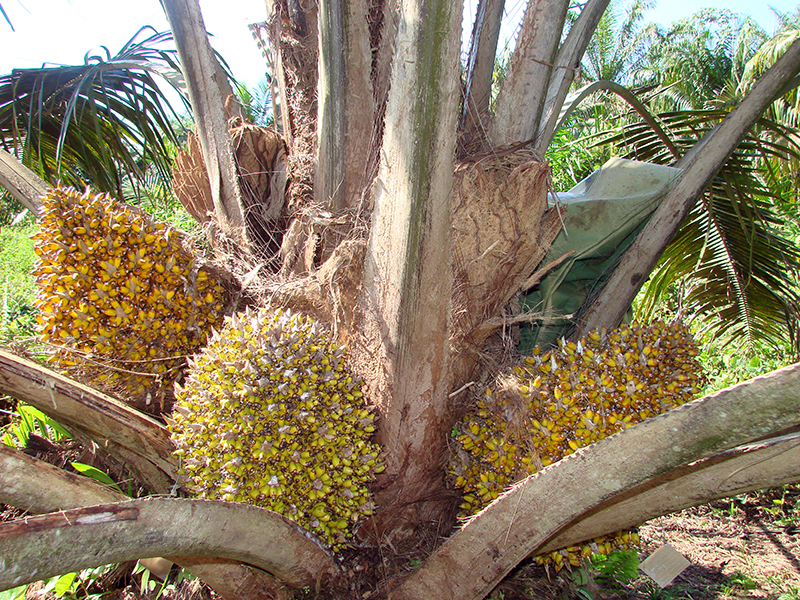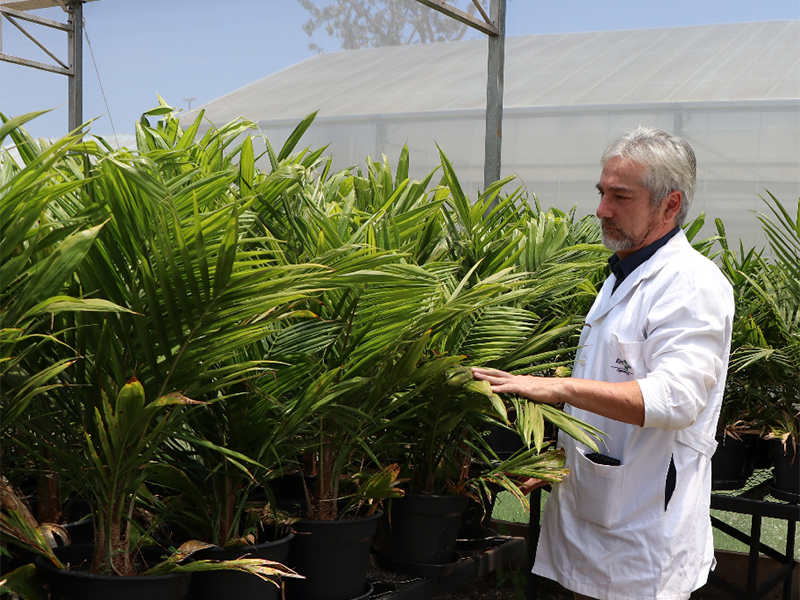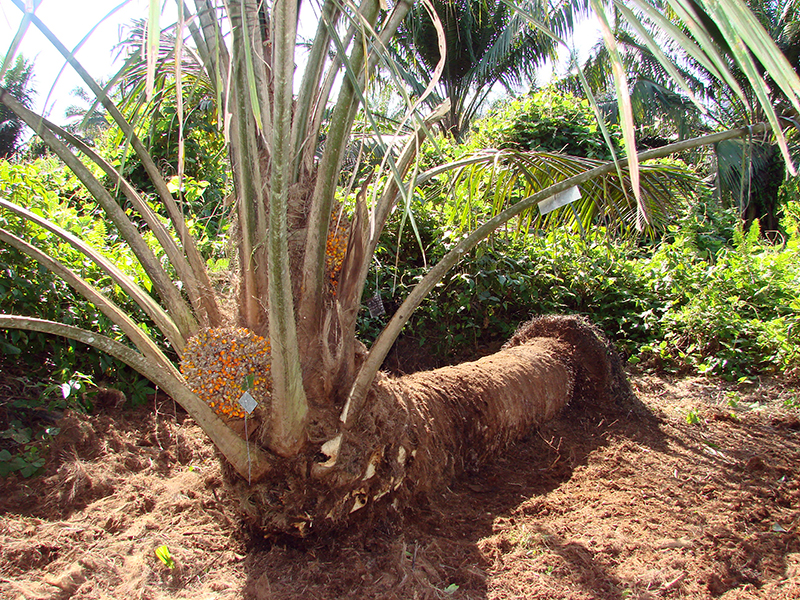Research helps improve a key ingredient in vegetable oil
November 9, 2020 - Rachel Schutte
Have you ever wondered what type of plant is actually used to make vegetable oil?

As it turns out, vegetable oil can come from various sources. But most vegetable oil used across the globe comes from a crop called oil palm. Oil palm has the highest oil productivity among all oilseed crops.
Manoel Teixeira Souza Júnior is a researcher in Brazil who works with oil palm plants. The work of his team was recently published in Crop Science, a journal of the Crop Science Society of America.
“There are two different species of oil palm plants,” explains Souza Júnior. “The African oil palm is domesticated and grown commercially. The American oil palm is not domesticated, but it has many desired traits like high oil quality and resistance to disease.”
The goal of Souza Júnior’s work is to organize and describe the collection of American oil palm plants at the Brazilian Agricultural Research Corporation, Embrapa. The collection, known as the germplasm bank, contains a wide variety of oil palm plants with lots of genetic diversity.
“In order for plant breeders to efficiently use the American oil palm in an oil palm breeding programs, it was imperative to further characterize our collection,” explains Souza Júnior. “The results of our research will allow improvements in the collection, conservation and characterization of the plants in the germplasm bank.”

To make the collection of oil palm plants more usable, researchers evaluated the genetic codes of each plant. They searched for genetic markers, which are short, identifiable DNA sequences that code for specific traits.
Understanding the similarities and differences within the genetic codes of each plant is important. It helps breeders understand which plants can be most useful when they are looking to breed for certain qualities.
It also allows the research team at Embrapa to get rid of any plants in the collection that aren’t unique. “The current collection contains close to four thousand American oil palm plants, and our results show it could be reduced to about 20% of its size,” explains Souza Júnior.
Farmers are always looking for new varieties of oil palm to grow with better oil yield, oil quality and tolerance to stress. Plant breeders can now use the germplasm bank collection to incorporate desired traits that already exist within the American oil palm gene pool into plants that are grown commercially.
There are two main characteristics that breeders are using from the American oil palm to improve commercial varieties of the African oil palm. These include better oil quality and resistance to the fatal yellowing disease.

Souza Júnior hopes to build upon this research to continue helping farmers. The next steps include determining the DNA sequence of different oil palm varieties and collecting data on how commercial oil palm responds to environmental stress.
By helping farmers improve their oil palm crops, new markets for the product can be explored. Most oil palm production goes toward the chemical, food and cleaning industries. With increased supply, researchers can continue to explore medicinal and bio-fuel opportunities for oil palm.
“We are in the middle of the COVID-19 pandemic, and researchers around the world are working hard to develop solutions,” says Souza Júnior. “Although my work does not relate to this pandemic, every real researcher wants to be able to make life on this planet better. I enjoy having the opportunity to solve problems and contribute to a better future.”
Manoel Teixeira Souza Júnior is a researcher at the Brazilian Agricultural Research Corporation, Embrapa. This work was funded by a grant from the Brazilian Ministry of Science, Technology, and Innovation (MCTI).
